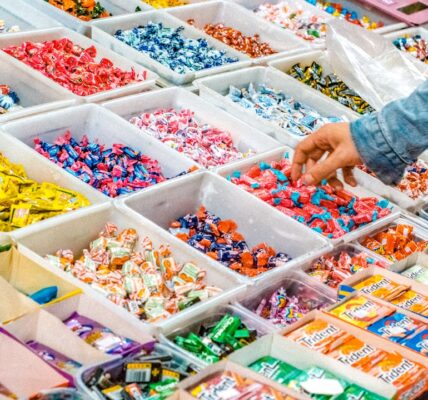Freeze drying, also known as lyophilization, is a process that involves removing the moisture from a product while preserving its structure and properties. This technology has been used for centuries to preserve food, medicine, and other perishable items. The process involves freezing the product and then subjecting it to a vacuum, which allows the frozen water to sublimate directly from solid to gas without passing through the liquid phase.
The history of freeze drying technology dates back to ancient times when people would use the cold temperatures of winter to freeze and preserve food. However, it wasn’t until the 20th century that freeze drying became a widely used industrial process. In the 1930s, freeze drying was developed as a method for preserving blood plasma during World War
Since then, the technology has been refined and expanded to various industries, including the food industry.
Freeze drying has numerous applications in different industries. In the food industry, it is used to preserve fruits, vegetables, meats, and even candies. In the pharmaceutical industry, it is used to preserve drugs and vaccines. It is also used in the biotechnology industry to preserve enzymes and other biological materials. The ability of freeze drying to preserve the structure and properties of a product makes it an ideal method for preserving delicate and heat-sensitive items.
Key Takeaways
- Freeze drying is a technology that removes moisture from food by sublimation, preserving its quality and extending its shelf life.
- Freeze drying is a great method for preserving candies, as it maintains their texture, flavor, and appearance.
- Freeze drying affects candy texture and flavor by removing water without altering the candy’s structure or taste.
- The best candies for freeze drying are those with low moisture content, and they need to be prepared by removing any excess moisture before the process.
- The freeze drying process involves several steps and equipment, including freezing, primary drying, and secondary drying. Successful candy freeze drying requires careful monitoring and control of these steps.
Benefits of Freeze Drying for Candy Preservation
One of the main benefits of freeze drying for candy preservation is the preservation of flavor and texture. Unlike other preservation methods that can alter the taste and texture of candies, freeze drying allows them to retain their original flavor and texture. This is because freeze drying removes moisture without subjecting the candies to high temperatures or pressure, which can cause changes in their structure.
Another benefit of freeze drying for candy preservation is extended shelf life. By removing moisture from candies, freeze drying inhibits the growth of bacteria, yeast, and mold, which are responsible for spoilage. This extends the shelf life of candies and allows them to be stored for longer periods without the risk of spoilage. Freeze dried candies can have a shelf life of up to several years, depending on the storage conditions.
In addition to extended shelf life, freeze drying also reduces the risk of spoilage. Since freeze dried candies have a low moisture content, they are less susceptible to microbial growth and enzymatic reactions that can lead to spoilage. This makes freeze dried candies a safe and reliable option for long-term storage.
Furthermore, freeze drying preserves the nutritional value of candies. Unlike other preservation methods that can degrade the nutritional content of food, freeze drying retains the vitamins, minerals, and other nutrients present in candies. This makes freeze dried candies a healthier alternative to other preserved candies.
How Freeze Drying Affects Candy Texture and Flavor
The freeze drying process involves three main steps: freezing, primary drying, and secondary drying. During freezing, the candies are rapidly frozen to a very low temperature, typically below -40 degrees Celsius. This freezes the water inside the candies and converts it into ice crystals.
During primary drying, the pressure is reduced to create a vacuum, and heat is applied to the candies. This causes the ice crystals to sublimate directly from solid to gas without passing through the liquid phase. As a result, the moisture is removed from the candies without causing any damage to their structure.
During secondary drying, any remaining moisture is removed from the candies. This step is done at a slightly higher temperature than primary drying to ensure that all moisture is completely removed.
The freeze drying process has minimal effects on candy texture and flavor compared to other preservation methods. The low temperature used in freezing prevents crystallization of sugars and preserves the structure of the candies. The sublimation process during primary drying removes moisture without causing any significant changes in texture or flavor.
In comparison to other preservation methods such as canning or drying, freeze drying offers superior preservation of texture and flavor. Canning can result in a loss of texture and flavor due to the high temperatures involved, while drying can cause shrinkage and changes in texture. Freeze drying, on the other hand, preserves the original texture and flavor of the candies, making them taste as fresh as when they were first made.
Best Candies for Freeze Drying: Selection and Preparation
Not all candies are suitable for freeze drying. The best candies for freeze drying are those that have a low moisture content and a stable structure. Candies that are high in sugar and low in moisture, such as hard candies, gummies, and mints, are ideal for freeze drying.
Before freeze drying, candies need to be prepared to ensure optimal results. This includes removing any packaging or wrappers from the candies and arranging them in a single layer on trays or racks. It is important to ensure that the candies are evenly spaced to allow for proper airflow during the freeze drying process.
Freeze Drying Process: Steps and Equipment

The freeze drying process involves several steps and requires specialized equipment. The process begins with freezing the candies to a very low temperature. This can be done using a blast freezer or liquid nitrogen.
Once the candies are frozen, they are placed in a freeze dryer, which is a machine that creates a vacuum and applies heat to remove moisture from the candies. The freeze dryer consists of three main components: a condenser, a vacuum pump, and a heating system.
The condenser is responsible for collecting the water vapor that is removed from the candies during the freeze drying process. The vacuum pump creates a vacuum inside the freeze dryer, which allows for sublimation of the ice crystals. The heating system provides heat to facilitate sublimation and removal of moisture from the candies.
The freeze drying process typically takes several hours to complete, depending on the size and moisture content of the candies. Once the process is complete, the freeze dried candies are removed from the freeze dryer and packaged for storage.
Tips for Successful Candy Freeze Drying
Several factors can affect the success of freeze drying candies. One important factor is the moisture content of the candies. Candies with a higher moisture content may take longer to freeze dry and may not achieve the desired texture and flavor. It is important to ensure that the candies have a low moisture content before freeze drying.
Another factor to consider is the size and shape of the candies. Smaller candies tend to freeze dry more quickly and evenly compared to larger candies. It is also important to ensure that the candies are evenly spaced on the trays or racks to allow for proper airflow during freeze drying.
Proper temperature control is also crucial for successful candy freeze drying. The temperature should be carefully monitored and adjusted throughout the process to ensure that the candies are not subjected to excessive heat, which can cause damage to their structure.
It is also important to avoid overloading the freeze dryer. Overloading can result in uneven drying and may lead to poor quality freeze dried candies. It is recommended to follow the manufacturer’s guidelines for maximum load capacity.
Storage and Shelf Life of Freeze Dried Candies
Proper storage conditions are essential for maintaining the quality and shelf life of freeze dried candies. Freeze dried candies should be stored in a cool, dry place away from direct sunlight and moisture. They should be stored in airtight containers or packaging to prevent moisture absorption.
The shelf life of freeze dried candies can vary depending on various factors, including the moisture content, packaging, and storage conditions. When stored properly, freeze dried candies can have a shelf life of up to several years. However, it is important to note that over time, freeze dried candies may lose some of their flavor and texture.
In comparison to other preservation methods, freeze drying offers a longer shelf life for candies. Canned candies typically have a shelf life of 1-2 years, while dried candies can last for several months. Freeze dried candies, on the other hand, can be stored for several years without significant loss of quality.
Creative Uses of Freeze Dried Candies in Cooking and Baking
Freeze dried candies can be used in various creative ways in cooking and baking. They can be crushed or powdered and used as toppings for cakes, cupcakes, and ice cream. They can also be incorporated into cookie dough or brownie batter to add a burst of flavor.
Freeze dried candies can also be used to make flavored syrups or sauces. By crushing the freeze dried candies and mixing them with a liquid, such as water or milk, a flavorful syrup or sauce can be created. This can be drizzled over pancakes, waffles, or desserts.
Furthermore, freeze dried candies can be used to make flavored whipped cream or frosting. By crushing the freeze dried candies and folding them into whipped cream or frosting, a unique and flavorful topping can be created.
The use of freeze dried candies in cooking and baking offers several benefits. The freeze drying process preserves the flavor and color of the candies, making them an ideal ingredient for adding flavor to various dishes. Additionally, freeze dried candies have a long shelf life, allowing for easy storage and use whenever needed.
Comparison of Freeze Drying with Other Candy Preservation Methods
When choosing a preservation method for candies, it is important to consider the advantages and disadvantages of each method. Freeze drying offers several advantages over other preservation methods.
One advantage of freeze drying is that it preserves the original texture and flavor of the candies. Canning and drying methods can result in changes in texture and flavor due to high temperatures or prolonged exposure to heat. Freeze drying, on the other hand, removes moisture without causing any significant changes in texture or flavor.
Another advantage of freeze drying is the extended shelf life it offers. Canned candies typically have a shorter shelf life compared to freeze dried candies. Dried candies can also have a shorter shelf life due to the risk of moisture absorption. Freeze dried candies, on the other hand, can be stored for several years without significant loss of quality.
However, freeze drying also has some disadvantages compared to other preservation methods. One disadvantage is the cost and complexity of the equipment required for freeze drying. Freeze dryers can be expensive to purchase and maintain, and the process itself requires specialized knowledge and skills.
Another disadvantage is the time it takes to freeze dry candies. The freeze drying process can take several hours to complete, depending on the size and moisture content of the candies. This can be a drawback for businesses that require quick turnaround times.
When choosing a preservation method for candies, it is important to consider factors such as desired shelf life, texture, flavor, and cost. Each method has its own advantages and disadvantages, and the choice will depend on the specific needs and requirements of the candies.
Cost Analysis and Return on Investment for Candy Freeze Drying
The cost of freeze drying equipment and supplies can vary depending on the size and capacity of the freeze dryer. Small-scale freeze dryers suitable for home use can range from a few hundred dollars to several thousand dollars. Large-scale industrial freeze dryers can cost tens of thousands or even hundreds of thousands of dollars.
In addition to the cost of the equipment, there are also costs associated with operating and maintaining a freeze dryer. These costs include electricity, maintenance, and replacement parts.
When comparing the cost of freeze drying with other preservation methods, it is important to consider the long-term benefits and return on investment. While freeze drying may have higher upfront costs compared to other methods, it offers extended shelf life and superior preservation of texture and flavor. This can result in cost savings in the long run by reducing waste and spoilage.
The return on investment for candy freeze drying will depend on various factors, including the volume of candies being processed, the market demand for freeze dried candies, and the pricing strategy. It is important to carefully analyze the costs and potential revenue to determine the feasibility and profitability of candy freeze drying.
Freeze drying technology offers numerous benefits for candy preservation. It preserves the flavor and texture of candies, extends their shelf life, reduces the risk of spoilage, and retains their nutritional value. The freeze drying process involves freezing the candies, removing moisture through sublimation, and storing them in airtight containers. Freeze dried candies can be used in various creative ways in cooking and baking, and they offer a longer shelf life compared to other preservation methods. While freeze drying may have higher upfront costs, it offers long-term cost savings and a return on investment for businesses. Overall, freeze drying technology plays a crucial role in preserving the quality and freshness of candies.
If you’re a candy lover, you’ll definitely want to check out this fascinating article on freeze drying candy. Discover how freeze dryers can transform your favorite sweet treats into long-lasting snacks with preserved flavors and textures. Learn more about the benefits of freeze drying and how it can revolutionize the way you enjoy your favorite candies. To dive deeper into this topic, head over to performingrail.com and explore their insightful article on freeze drying candy.
FAQs
What is a freeze dryer for candy?
A freeze dryer for candy is a machine that removes moisture from candy by freezing it and then using a vacuum to evaporate the ice crystals. This process preserves the candy’s flavor, texture, and appearance.
How does a freeze dryer for candy work?
A freeze dryer for candy works by freezing the candy at a low temperature and then creating a vacuum to remove the moisture. The machine first freezes the candy, then it creates a vacuum, and finally, it applies heat to the candy to evaporate the ice crystals.
What are the benefits of using a freeze dryer for candy?
The benefits of using a freeze dryer for candy include preserving the candy’s flavor, texture, and appearance, extending its shelf life, and reducing the risk of spoilage. Freeze-dried candy is also lightweight and easy to transport.
What types of candy can be freeze-dried?
Most types of candy can be freeze-dried, including gummies, chocolates, hard candies, and marshmallows. However, some types of candy may not be suitable for freeze-drying due to their texture or ingredients.
What are the disadvantages of using a freeze dryer for candy?
The main disadvantage of using a freeze dryer for candy is the cost of the machine, which can be expensive. Additionally, the process can be time-consuming, and the candy may lose some of its original texture and shape during the process.
What are some common uses for freeze-dried candy?
Freeze-dried candy is commonly used in the food industry for creating unique desserts, toppings, and decorations. It is also popular among hikers and campers as a lightweight and portable snack. Additionally, freeze-dried candy is used in scientific research and experimentation.




